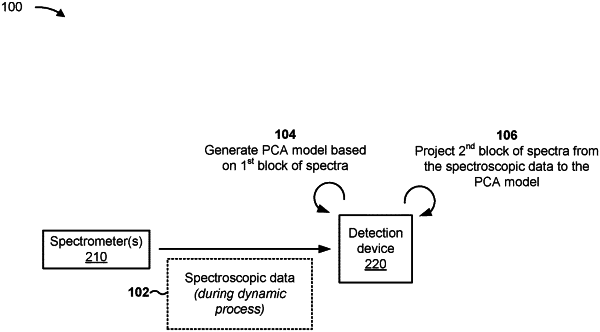| CPC G01J 3/28 (2013.01) [G01J 2003/2836 (2013.01); G01J 2003/284 (2013.01); G01J 2003/2886 (2013.01)] | 20 Claims |

|
1. A method, comprising:
receiving, by one or more devices, spectroscopic data during a performance of a blending process;
projecting, by the one or more devices and based on a first block of spectra from the spectroscopic data, a second block of spectra from the spectroscopic data,
where the first block of spectra includes spectra collected during one or more revolutions of a blender performing the blending process;
determining, by the one or more devices and based on projecting the second block of spectra, whether the blending process has reached a steady state,
where the steady state indicates that blending has been achieved; and
one or more of:
causing, by the one or more devices and based on whether the blending process has reached the steady state, the blender to stop the blending process or restart the blending process on new materials,
causing, by the one or more devices and based on whether the blending process has reached the steady state, a next step of a manufacturing process to be initiated,
providing, by the one or more devices, an indication of whether the blending process has reached the steady state, or
enabling visualization of an evolution of the blending process.
|